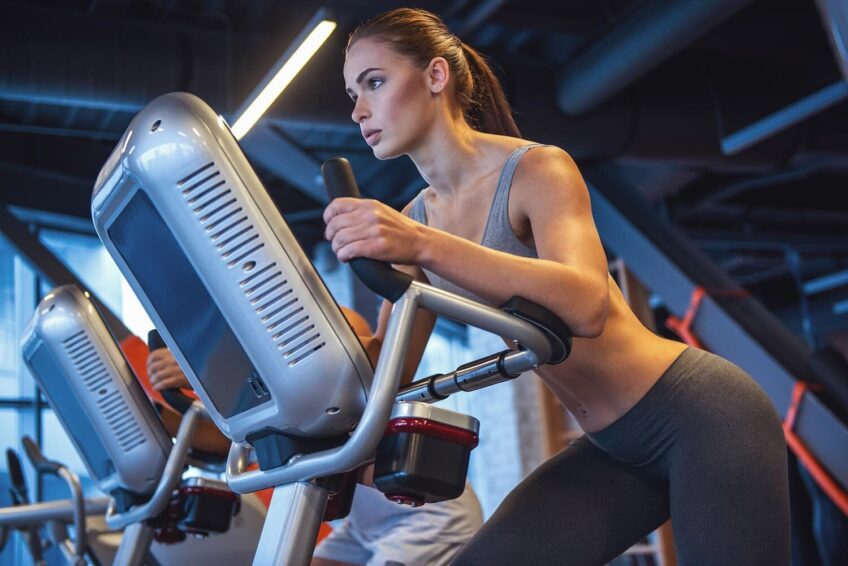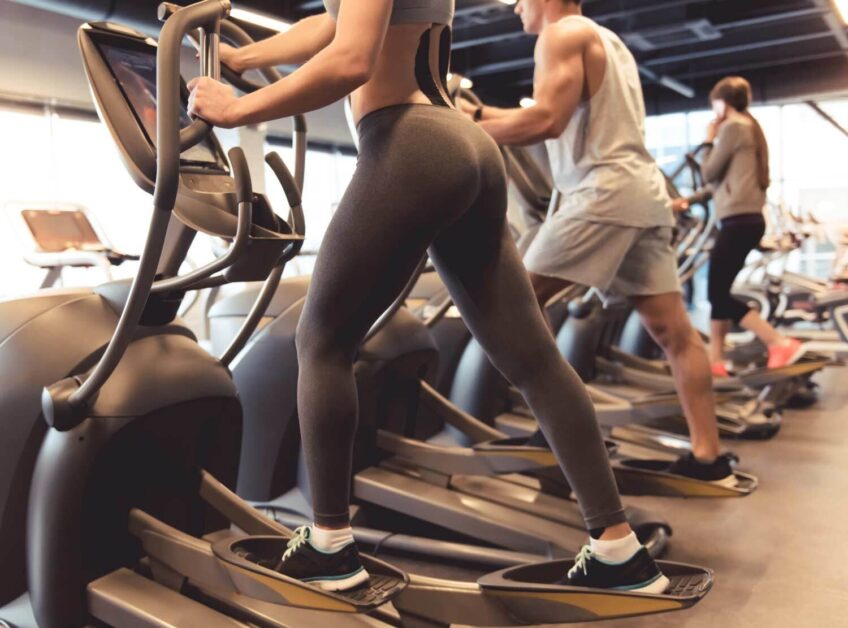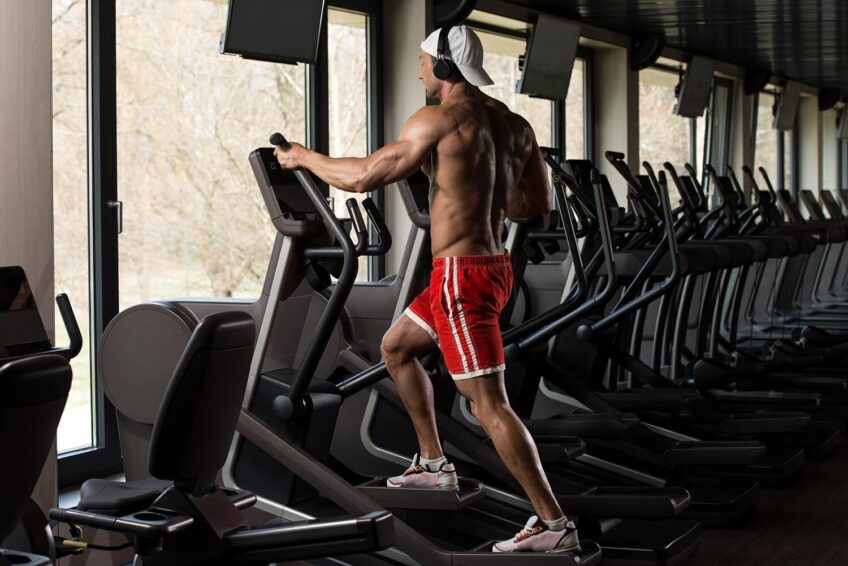What Muscles Does an Elliptical Machine Work?
Getting the most out of your workout is key. The elliptical might just be the best fitness machine for a total muscle workout.

The elliptical machine is one of the most popular at most gyms and for a good reason. It combines cardio fitness with muscular endurance in one neat piece of equipment. It’s also low-impact, gets your heart pumping, and delivers an awesome full-body workout.
I’d been using the elliptical at my local gym for a few years before I started investigating buying one for myself. But, even before I started looking at the best elliptical equipment options, I wanted to get a better feel for the elliptical's benefits. From there, I decided whether it was the best equipment for my home gym (spoiler alert: it definitely was!).
So, let’s break it down and look at which muscles you’re working when you’re on the elliptical.
What muscles do elliptical workouts target?
Working from bottom to top, let’s break down the major muscle groups that an elliptical targets.
Calves
Your calves are the muscle group extending from your knee to your ankle. These muscles coordinate with your quads and hamstrings to move your legs up and down on the elliptical, and they’re continually contracting throughout the day as you go about your routine.
Why do you need a calf workout?
Your calves are powerful stabilizing muscles that keep the body standing and upright and add strength to your ankles. They’ll help you walk daily, build endurance, and make climbing stairs easy.
Hamstrings
The elliptical is a great workout for your hamstring muscles. These muscles run down the back of the leg from the glutes down to the knee joint and work in tandem with your quads, often completing the movement that originates with the quads.
Your hamstrings comprise the semitendinosus, the semimembranosus, and the biceps femoris, which help move your body forward, straighten your hips, and lift your knees. This means they’re engaged in each movement cycle on an elliptical machine, helping to depress the pedal and return it to the starting position.
Why do you need a hamstring workout?
Hamstring muscles add stability and balance. You will need strong hamstrings for weight training, cycling, or downhill running. They’re essential for everyday activities such as standing from a sitting position and navigating stairs safely.
Quads
The quadriceps are often the muscle group that most people focus on when using an elliptical machine. The muscles run down the front of your leg from your hip to your knee, comprised of your rectus femoris, vastus intermedius, vastus lateralis, and vastus medialis.
I always wondered about my quads with an elliptical workout; they don’t seem to burn as much as on a stationary bike or treadmill. But, because ellipticals are low resistance and have a whole-body focus, the quads take less strain.
Every time you transfer weight from one leg to the other to push the pedal down on an elliptical, your quads are engaged, so if you want to really work them, crank up the elliptical elevation level!
Why do you need a quad workout?
You use your quads every day, whether walking, running, or bending over, and any lower body exercises such as lunges or squats (or even cycling) will get easier if your quads are stronger. You’ll also enjoy the benefits next time you climb a mountain or get up from a chair.
Glutes
This is where an elliptical workout starts to get really interesting: the glutes!

This is the name of the fleshy muscle group that makes up your behind, but everyone knows that. The group of three muscles includes your gluteus maximus, gluteus medius, and gluteus minimus. They’re activated when you stand up and climb stairs, as well as supporting the action of your hamstrings and quads in pushing the leg down.
The elliptical is ideal for a glute workout as the swinging motion strengthens the muscles without putting strain on your joints.
Why do you need a glute workout?
They will help you squat and lunge like a boss (or do any lower body exercise, for that matter). Glutes are used in most daily activities as they’re essential for internal and external hip rotation, hip extension, and moving from side to side. Still, they are often one of the most neglected muscle groups during exercise.
Core
These muscles help to maintain your posture, keeping you upright and are located in the center of the body. Your core muscles, primarily your abs, work indirectly while exercising on the elliptical, helping maintain stability and a good, upright posture.
Why do you need to work on your core?
A strong core forms the foundation of most fitness activities and will translate into almost all aspects of your life. Your core muscles take the strain off your back, reducing the risk of injury and back pain, and will help you maintain good posture when working at a computer and when walking around.
Back
Your back muscles consist of several different smaller muscles that are divided into the superficial muscles (associated with shoulder movements), intermediate (associated with thoracic cage movements), and deep (associated with vertebral column movements).

The elliptical machine engages your back muscles (and biceps) as you pull the handlebars towards you on each rep.
Why do you need to work your back muscles?
A strong back provides the framework for building a healthy, active body. You use your back muscles throughout the day, from opening doors to walking and sitting upright, so ensuring they stay in top shape makes sense.
Chest (and Front Deltoids)
These muscles located on the front of your body are responsible for pushing and working in opposition to your back muscles, which are responsible for pulling. On an elliptical, when you push the handles forward, the chest is engaged (along with the front deltoids and tricep muscles).
Why do you need a chest workout?
A strong chest and front deltoids will help strengthen your shoulders and triceps, making you stronger, able to lift heavy objects, and maintain a good posture (combined with a strong core).
Getting the Most from Your Elliptical Workout
Most frequent gym-goers will be quick to tell you to jump on an elliptical if you want a good workout, but they can’t tell you why or how to get the most from your time on the machine.
Here are a couple of tips that I’ve picked up, and they’ve made a huge difference to the number of muscles that the machine works and how hard it works them:
- Turn up the resistance – as with other machines, you need to challenge yourself to get the best results. Get your heart rate up and get busy burning calories!
- Engage your core – this might take a bit of practice (and you might need to do a couple of Pilates classes to get it right), but engaging your core will protect your lower back and build core strength, making your elliptical workout even more effective.
- Keep your upper body still – it’s better for your joints and lets you get the most from your workout.
- Use different settings – most ellipticals offer a variety of workouts, and you’ll get better results if you switch up your routine.
- Try squats – yes, you’ll look strange, but this is a game-changer. You’ll feel the burn in your glutes and quads, and it’s also a great challenge for your core.
- Stand up straight – you’ll engage your muscles better (especially your glutes and core) and protect yourself against injuries.
- Get your foot position right – shift your weight distribution off your toes and towards your heel, and you’ll soon feel the difference as your glutes fire up.
- Pedal backward – this is great for giving different muscles a workout, especially your hamstrings.
- Free up your hands – the handles add stability, which means that your body doesn’t need to do the hard work of keeping you balanced. But your core needs work, so going hands-free can engage and strengthen the core, helping to prevent injuries and back pain.
My Thoughts?
While it’s true that no one piece of equipment is going to get you the results you need in one go, an elliptical gets pretty close, and the fact that it’s low-impact is a bonus for me. Studies show that an elliptical delivers workout benefits comparable to a treadmill, and it does that without the constant pounding on your joints.
The other thing worth remembering is that your whole body is getting a workout from your shoulders (if you have the coordination, use the handles properly!) to your feet. And with variations such as squatting or pedaling in reverse, you can further target different muscle groups.
I don’t have back or knee problems, which often motivates people to buy an elliptical. But, like many people, I feel like there’s too little time in the day. So, after a lot of research, I decided that an elliptical trainer was the best addition to my home gym because it has huge weight loss benefits, delivers a full-body workout, and because it scales with you. You can crank up the resistance and incline as you get fitter.
The elliptical works most of the body’s major muscle groups, which means more calories burned, better endurance, and improved muscle tone – which sounds great to me!
Tony Lee, MS, RD
Tony Lee, RD, MS, is a highly qualified and accomplished Registered Dietitian with a Master’s Degree in Nutrition Sciences. Tony brings over two decades of experience in dietetics, specializing in sports nutrition. Interests include studying all aspects of wellness, fitness, genetics, and peak health performance.










